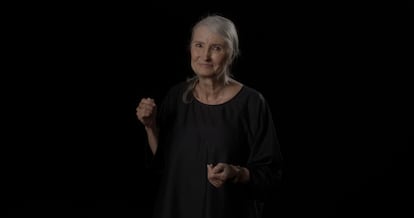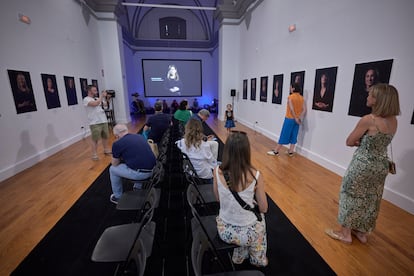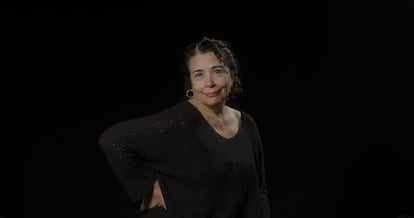'Geniuses', rebellious women of the Baroque period, join hands with Spanish actresses

The Royal Spanish Academy (RAE) dictionary says so. Genius: "Masculine. Extraordinary mental capacity to create or invent new and admirable things." It's synonymous with character, humor, and talent. Genius: "A compositional element. It means origin or process of formation . Orogeny, pathogenesis ."
It's clear that there are no geniuses, nor are any expected. But that's a circumstance that Irene Pardo, director of the 48th Almagro International Classical Theatre Festival, a European benchmark for Baroque theater, has visited the corral (the comedy theater in that La Mancha city). In fact, one of the new features of the festival, which runs until July 27, is an activity called Genias , with a reception and success that has surprised even the organizers.
There are several reasons. It proves that geniuses exist and have existed, and that the Royal Academy of Spanish Studies should start taking note. Almagro's work isn't a typical spectacle; it's an audiovisual installation, with a screen almost cinematic in size that allows you to see both sides with equal quality. You can hear the voices and performances of renowned and accomplished contemporary actresses. You can discover or revisit important texts by women from the Golden Age , who are by no means far behind, either in ingenuity or literary terms, their male colleagues, so deservedly famous, so deservedly illustrious, and so deservedly read centuries after they passed away. They only passed away, and it's only now, not so many years ago, that their work is beginning to be valued and enjoyed.
The show, because it is one, is free, profound, and beautiful. The Contemporary Art Space, where it is held, is a relaxing, cool, and quiet haven where you can enjoy Genias, from a chair or lying on the floor among cushions. These are all important causes that are healthy for the mind and the wallet.
“Contemporary women lend their bodies and voices to these writers and figures to reconstruct, from the present, a memory that time tried to silence,” Pardo adds. “And we do so not from nostalgia, but from relevance; because their texts, today, continue to pose urgent questions,” notes the director, who makes it clear that this installation is also a gesture toward language.

In this project, 20 actresses and a singer-songwriter explore the legacy left not only by great golden age playwrights who defended the intelligence, freedom, and dignity of women—who are few, but they existed—but also by texts that exist in the Spanish Baroque, written by brilliant, ingenious women writers, with intelligence as a refuge and weapon, but whom time, the centuries, patriarchy, and stupidity have made barely known.
Only in recent years have we begun to understand who they are. We know of 11 authors for whom the convent was a refuge, but writing was their resistance: Marcia Belisarda, Ana Caro de Mallén, Sor Juana Inés de la Cruz, Leonor de la Cueva y Silva, Feliciana Enríquez de Guzmán, Cristobalina Fernández de Alarcón, Gertrudis Gómez de Avellaneda, Saint Teresa of Jesus, Sister María de San Félix, María de Zayas, and also Rosalía de Castro.
Not forgetting that seven female characters from the Golden Age are also represented: Laurencia, from Fuenteovejuna; Clara and Finea, from The Foolish Lady, and Leonarda, from The Avenger of Women , all by Lope de Vega; María de Molina, from Prudence in Women, by Tirso de Molina; Doña Ángela, from The Duende Lady, and Semíramis, from The Daughter of the Air, both by Calderón de la Barca.
"Characters who resisted the place assigned to them, who defied obedience, docility, silence. Women who said on stage what many couldn't say off it," Pardo maintains.

Their voices resonate on the lips of singer-songwriter Rosa León (her Lope romance is delicious), and of actresses María Adánez, Anabel Alonso, Mamen Camacho, Silvia de Pé, Eva del Palacio, Nuria Gallardo, Cayetana Guillén-Cuervo, Paula Iwasaki, Gloria Muñoz, Adriana Ozores, Amparo Pamplona, Pepa Pedroche, Marta Poveda, Miriam Queba, Alba Recondo, Carolina Rubio, Eva Rufo, Clara Sanchis, Nathalie Seseña and Cecilia Solaguren. After hearing the voices of those who are no longer with us, after seeing these professionals who have so often traversed the Baroque, one cannot help but feel shame, because art should never accept oblivion.
“The form 'genia' is barely documented, and only occasionally, in colloquial registers,” Pardo notes, “so I can't find a more pertinent context than this festival, which sheds light on the margins, on what seemed immovable, on what resists static centers, to reclaim the act of naming.” “Or, at least, to begin to do so,” she asserts. Brilliant playwrights are being discovered, and we have managed to reach them through exploration, research, and efforts like the one we find in Genias, a festival production in collaboration with the National Classical Theater Company (CNTC) and sponsored by the Women's Institute.
Finally, Pardo makes clear what Genias is: “A form of presence. A resistance made voice. A reunion between centuries. And a luminous crack in the language.”

EL PAÍS

-U07181236766qOT-1024x512%40diario_abc.png&w=3840&q=100)


%3Aformat(jpg)%3Aquality(99)%3Awatermark(f.elconfidencial.com%2Ffile%2Fbae%2Feea%2Ffde%2Fbaeeeafde1b3229287b0c008f7602058.png%2C0%2C275%2C1)%2Ff.elconfidencial.com%2Foriginal%2Fcc2%2F9fa%2F4a7%2Fcc29fa4a78724e8c619fe39ab42eea47.jpg&w=3840&q=100)
